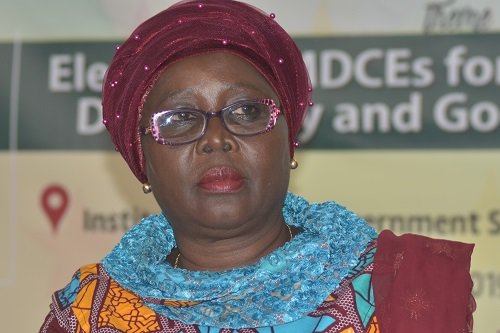
The Asante Akim North Municipal in the Ashanti Region has been ranked as the best municipality out of the 216 Metropolitan, Municipal and District Assemblies (MMDAs) in the country.
Asokore Mampong Municipal, also in the Ashanti Region, was placed last on the District League Table (DLT) released in Accra on Tuesday.
In terms of regional ranking, Greater Accra placed first while Eastern occupied the last position.
The League Table, fifth of its kind, was based on the assessment of performance of the various districts in seven different areas including education, sanitation, health, security, governance, water supply, birth registration and net school attendance rate of students at the primary level.
Analysis of the sectors indicated that Nanumba South District in the Northern Region and Asokore Mampong Municipal recorded the highest and lowest pass rate respectively in the Basic Education Certificate Examination (BECE) pass rate, while Kpone Katamanso District in Greater Accra and Effutu Municipal in the Central Region had the highest and lowest access to safe drinking water respectively.
In the health sector, Atwima Nwabiagya District in the Ashanti Region came out as best in skilled birth attendance, while Asokore Mampong Municipal took the final spot.
The DLT was introduced in 2014 by the United Nations International Children’s Emergency Fund (UNICEF) Ghana, in collaboration with the Ghana Center for Democratic Development (CDD-Ghana) and the Centre for Social Policy Studies of the University of Ghana.
It is aimed at helping to identify disparities in social development among districts, especially in sectors and services related to the survival and development of children.
Presenting findings of the report, Dr Yoshimi Nishino, said Asante Akim North Municipality came out top of the league table because it performed above average in education, recorded a high health indicator, high level of water coverage, high police coverage and high governance score.
On the other hand, Asokore Mampong Municipal obtained last position because it scored the lowest in education, very low in sanitation and health, she added.
She called for a complete assessment of the current District Assembly Common Fund (DACF) formula to make it more equitable as well as further assessment on allocations and use of the fund to promote accountability.
Going forward, she advocated an increase in the overall amount of DACF to enable the MMDAs to meet their obligations in developing communities and improving the socioeconomic lives of citizens.
Anne-Claire Dufay, UNICEF Representative in Ghana, said, it was useful to note disparities between districts and regions in social sectors to ensure better prioritisation, planning, resource allocation and implementation as Ghana strives to realise the Sustainable Development Goals (SDGs).
The report, she said, was ultimately to provide evidence to inform equity-focused decisions to ensure that all children and their families have access to quality basic social services.
Deputy Director, CDD-Ghana, Dr. Franklin Oduro, stated that the DLT was an important tool that should promote advocacy and capacity-building aimed at improving areas that the various MMDAs fell short in service delivery.
Kwasi Boateng Agyei, a Deputy Minister of Local Government and Rural Development, noted that the report would conscientise citizens to work with the MMDAs to improve development, adding that the ministry would continue to work with UNICEF and other development partners to use the table in planning and designing solution to challenges in the various districts.
The Government Statistician, Professor Samuel Anim, said the report would give the country another perspective to position itself by comparing what it needed to know in the provision of public service and social development.
According to him, the report would help produce data policy making in the districts and how those resources were manifested on the ground as well as keep MMDAs ready and responsive to the data collection.
BY CLAUDE NYARKO ADAMS and DEBORAH ASUMA







